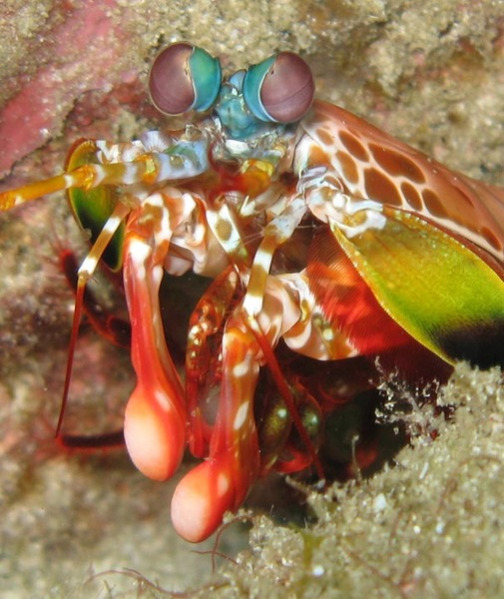Simanaitis Says
On cars, old, new and future; science & technology; vintage airplanes, computer flight simulation of them; Sherlockiana; our English language; travel; and other stuff
DESERT-DWELLING FAIRY SHRIMP
SHRIMP HAVE BEEN subjects here at SimanaitisSays a total of six times, five of their appearances being culinary. The exception occurred four days after this website’s inauguration, in SHRIMP WALLOP INSPIRES COMPOSITE DESIGN, August 17, 2012. The peacock mantis shrimp, Odonodactylus scyllarus, has feelers that are so club-like they can shatter glass aquarium walls.

By contrast, today’s topic is the fairy shrimp, Phallocryptus fahimii, a hardy little beast with a dramatically different lifestyle: Its desiccated eggs can lay in desert sand for decades while they await the rare presence of water. When rains come, the eggs mature into fairy shrimp, freshwater cousins of brine shrimp.
As described by Sabrina Imbler in The New York Times, September 21, 2020, “For a month or two, the fairy shrimp frolic, swimming upside-down in their ephemeral lakes and laying their eggs before they die or the pool dries up, whichever comes first.”

A Wide, If Fleeting Habitat. Imbler notes, “Fairy shrimps live in brief spurts in seasonal ponds throughout the world, from the steppes in Mongolia to woodlands in Long Island. But the Lut Desert, often called the hottest spot in the world, may be the last place one would think to find water, even seasonally.”

A Desert of Emptiness, But…. In Farsi, Dasht-e Lut translates into “desert of emptiness.” Dr. Hossein Rajaei, one of the researchers making the Lut’s fairy shrimp discovery, says, “I suppose they gave it this name because many people believed there was no life in this desert.”
As Imbler describes, in March 2017, Rajaei and his colleagues “found a lake glimmering in the middle of the desert like an oasis. Dr. Rajaei had never seen a lake so big in the Lut, but the desert had experienced its first heavy rainfall after a decade of drought. The 87 degree Fahrenheit water—the temperature of warm, creamy soup—felt refreshing in the immense heat, and as Dr. Rajaei waded in the shallow pool he saw milky white creatures swimming around his legs, leaving trails of tiny bubbles.”
A New Fairy Shrimp. Hadi Fahimi was the team’s herpetologist, and he and fellow researcher Alexander V. Rudov helped scoop up the creatures with an insect net. Expedition leader and crustacean specialist Martin Schwentner recognized the creature as a new fifth species of the genus Phallocryptus. The creature’s scientific name Phallocryptus fahimii honors the team’s herpetologist, who died in an Irani plane crash in 2018.
The Technical Report. Martin Schwentner, Alexander V. Rudov, and Hossein Rajaei describe their discovery in Zoology in the Middle East, published online August 5, 2020. Its title is “Some Like It Hot: Phallocryptus fahimii sp. n. (Crustacea: Anostraca: Thamnocephalidae) From the Lut Desert, the Hottest Place on Earth.”
Phallocryptus fahimii, the researchers note, “is endemic to Iran and known only from its type locality in the Lut desert. The Lut desert has been designated the ‘Thermal pole of the Earth’ with surface temperatures reaching up to 78.2º C [172.8 degrees Fahrenheit].”

Three of the four other Phallocryptus genus, the researchers note, “have relatively restricted geographic distributions.” One occurs in north and central Argentina; another, in Texas and New Mexico, a third in eastern Mongolia. “By contrast,” the researchers say, “P. spinosa is geographically widespread, occurring in Eurasia from the Iberian Peninsula and the Mediterranean Basin to Ukraine, Kazakhstan, Iran, Pakistan and Afghanistan as well as in northern and southern Africa….”

P. fahimii, though, is happy residing in the Lut, its eggs waiting patiently, even for decades, for the next rainfall. ds
© Dennis Simanaitis, SimanaitisSays.com, 2020
